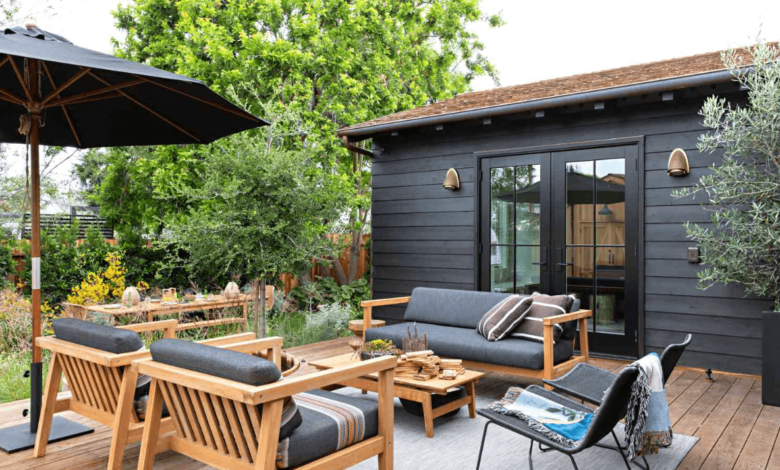Deck Building: Design Tips for a Functional Outdoor Space

Designing a functional outdoor space through deck building requires careful consideration of various elements that contribute to both utility and aesthetic appeal. From selecting appropriate materials that withstand the elements to creating distinct areas for relaxation and dining, each decision impacts the overall experience. Furthermore, the layout and flow must facilitate seamless movement while enhancing comfort through thoughtful design choices. As we explore these essential tips, it becomes evident that the success of your outdoor sanctuary hinges on a balanced approach—one that invites both functionality and style. What specific aspects will you prioritize in your deck design?
Choosing the Right Materials
When embarking on a deck-building project, selecting the right materials is paramount to ensuring both durability and aesthetic appeal.
Various wood options, such as cedar, redwood, and composite materials, offer distinct characteristics.
Additionally, maintenance considerations, including resistance to rot and insect damage, will influence longevity.
Prioritize materials that align with your vision and lifestyle, allowing for an inviting outdoor space that endures the test of time.
Optimizing Layout and Flow
After selecting the appropriate materials for your deck, the next step is to consider how to optimize the layout and flow of the space.
Effective space utilization requires analyzing traffic patterns to ensure smooth movement. Create pathways that encourage exploration while maintaining functionality.
Incorporating varied seating arrangements can enhance the experience, allowing for both relaxation and social interaction without compromising accessibility.
Incorporating Functional Zones
Creating a cohesive outdoor experience hinges on the thoughtful incorporation of functional zones within your deck design.
Strategically plan seating arrangements to foster conversation and relaxation, while delineating distinct activity areas for dining, grilling, or games.
This intentional layout not only maximizes space but also encourages seamless transitions between zones, ensuring your deck serves as a versatile haven for leisure and enjoyment.
Enhancing Aesthetics and Comfort
Three essential elements can significantly enhance the aesthetics and comfort of your deck: thoughtful material selection, strategic lighting, and the integration of textiles.
Opt for harmonious color palettes that complement your outdoor furnishings while ensuring durability.
Incorporate adjustable lighting to create ambiance during evening gatherings.
Finally, enrich your space with cushions and throws, inviting relaxation and allowing for personal expression in your outdoor sanctuary.
Also read: Creating a Relaxing Spa Experience at Home
Conclusion
In conclusion, the design of a functional outdoor deck necessitates careful consideration of materials, layout, and comfort. Notably, a study reveals that outdoor living spaces can increase a home’s value by up to 20%. This statistic underscores the importance of creating aesthetically pleasing and functional zones that enhance usability while ensuring longevity. By prioritizing durable materials and thoughtful design, outdoor decks can evolve into cherished sanctuaries that cater to relaxation, dining, and social interaction.



